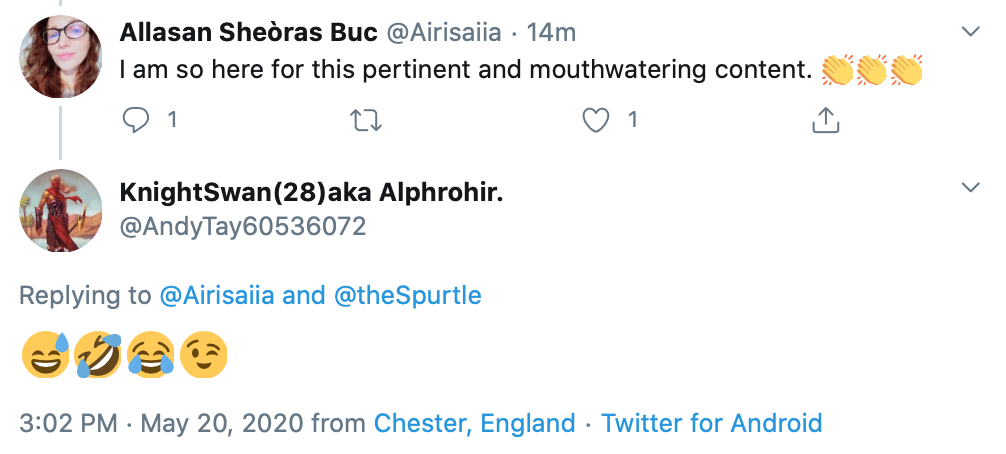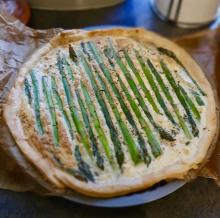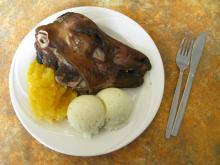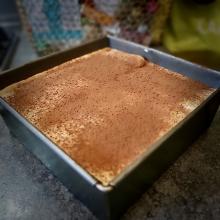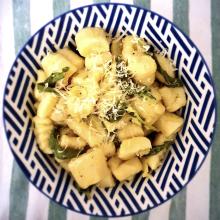
TRADITIONAL POTATO GNOCCHI WITH BUTTER AND SAGE DRESSING
In Italian we have a saying which goes: Giovedí gnocchi, venerdí pesce, sabato trippa (Thursday gnocchi, Friday fish, Saturday tripe). Gnocchi was traditionally a dish which was cooked and eaten on a Thursday to store up a starchier, more calorific meal before the conventionally Catholic meat-free Friday.
Gnocchi is something which triggers for me fond childhood memories of clambering on one of Gran's chairs, with one of her aprons wrapped around a few times, to reach her massively long, dark oak table and 'help' her make gnocchi.
Looking back, I cannot imagine I was much help to her at all – regardless, I was always rewarded by her turning a blind eye to me stuffing some raw gnocchi into my mouth.
With such a rich sentimental value, it will come as no surprise to you to learn that I love gnocchi more than I love rice. Or pasta. Or meat.
Potato gnocchi is not the only type featured in the Italian tradition – you'll find gnocchi made with semolina flour (gnocchi alla romana), stale bread, or pumpkin. But potato gnocchi is what I grew up with, so this is what I've decided to share with you all.—Giada


INGREDIENTS
SERVES 3–4 as main portions
700g potatoes (the starchier the potato, the better as it will yield firmer gnocchi)
200g plain flour + extra for dusting surfaces (use GF flour to cater for intolerances)
1 large egg
1 tsp of table salt
3-4 tbsp of butter (I used vegetable spread as I'm lactose intolerant)
Bunch of fresh sage
2 handfuls of coarse sea salt (one for cooking the potatoes and one for the gnocchi)
Optional – some Parmesan or Pecorino cheese to serve
METHOD
1.) Place the potatoes in a large saucepan and cover with cold water. Make sure the skin is nice and clean before you start. Place the pan on a medium-high heat, add a handful of sea salt and cook for about 35 mins from when the water starts boiling.
It is important NOT to peel the potatoes before boiling them, as the skin reduces the amount of water absorbed and therefore yields firmer gnocchi. TIP: select potatoes of a similar size so that they all cook in roughly the same time. The potatoes are ready when you can easily insert a fork through them.
Drain the potatoes and leave to cool slightly for a couple of minutes. Then remove the skin – be careful as they will be still very hot! TIP: I generally have a bowl of cold water next to me to dip my fingers in.
Once the potatoes are peeled, place them in a bowl and crush with a potato masher until smooth.
2) In a separate bowl, combine the flour with the salt. On a floured surface, semi-combine the mashed potatoes and the flour, finally making a well shape. In a small bowl, lightly beat the egg. Pour the beaten egg into the centre of the well and start combining the ingredients with floured hands and the assistance of a wooden spoon.
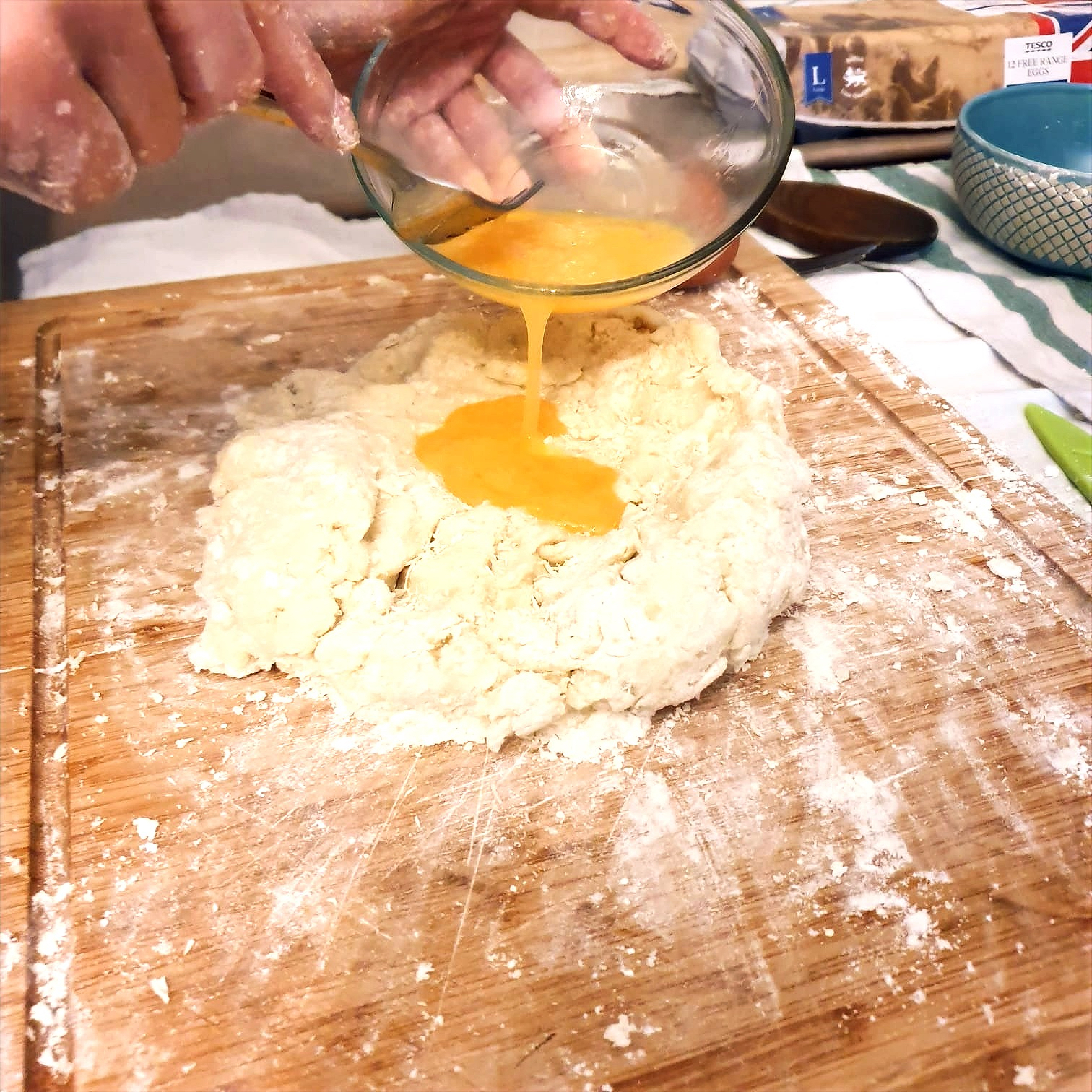
3) Once all ingredients are well combined, lightly knead the dough to ensure it is smooth and there are no lumps.
4) Now onto the shaping – re-flour your surface and your hands if needed, cut a small chunk off the dough and roll out with both hands into a snake shape. You will need to roll delicately so as not to lose the roundness of the shape – you will see that the dough is quite soft and fluffy so a little pressure will go a long way. Cut the snake into pillow-shapes of about 1.5–2cms in length.

5) For the next part you can use either a fork or a cheese grater (narrow-holed). Or you can do a mix of both – when I was little my Gran would handle the fork and I would be in charge of the cheese-grater!
Take a pillowed bit of dough and, using your thumb to apply pressure, roll it over the utensil you have chosen to create a pattern on the top and a slight dimple at the back. Shape all your gnocchi and place on a floured surface. TIP: best to use a wooden surface.
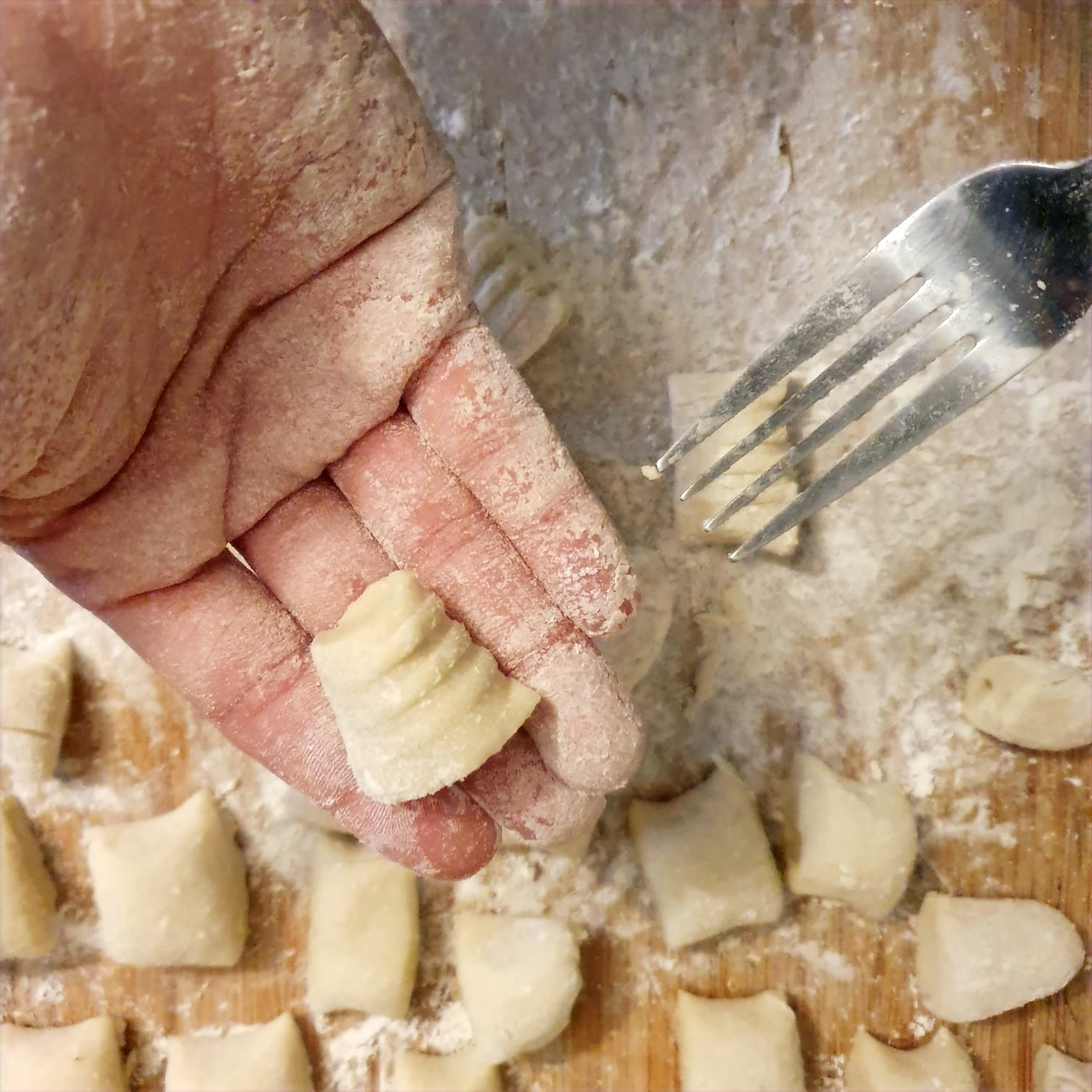
Gnocchi, unlike pasta, do not need to dry and are best enjoyed within 1–2 hours of making. Alternatively, you can freeze them in portions, which is why they are perfect for batch-making.
6) To cook the gnocchi, boil some water in a large saucepan, add a handful of sea salt and slide the gnocchi in the boiling water without crowding the pan. Gnocchi will cook really rapidly and come floating to the surface when ready. Do not drain your gnocchi in a colander as this will squash them – instead, use a slotted spoon and place in a bowl whilst you go through the batch.
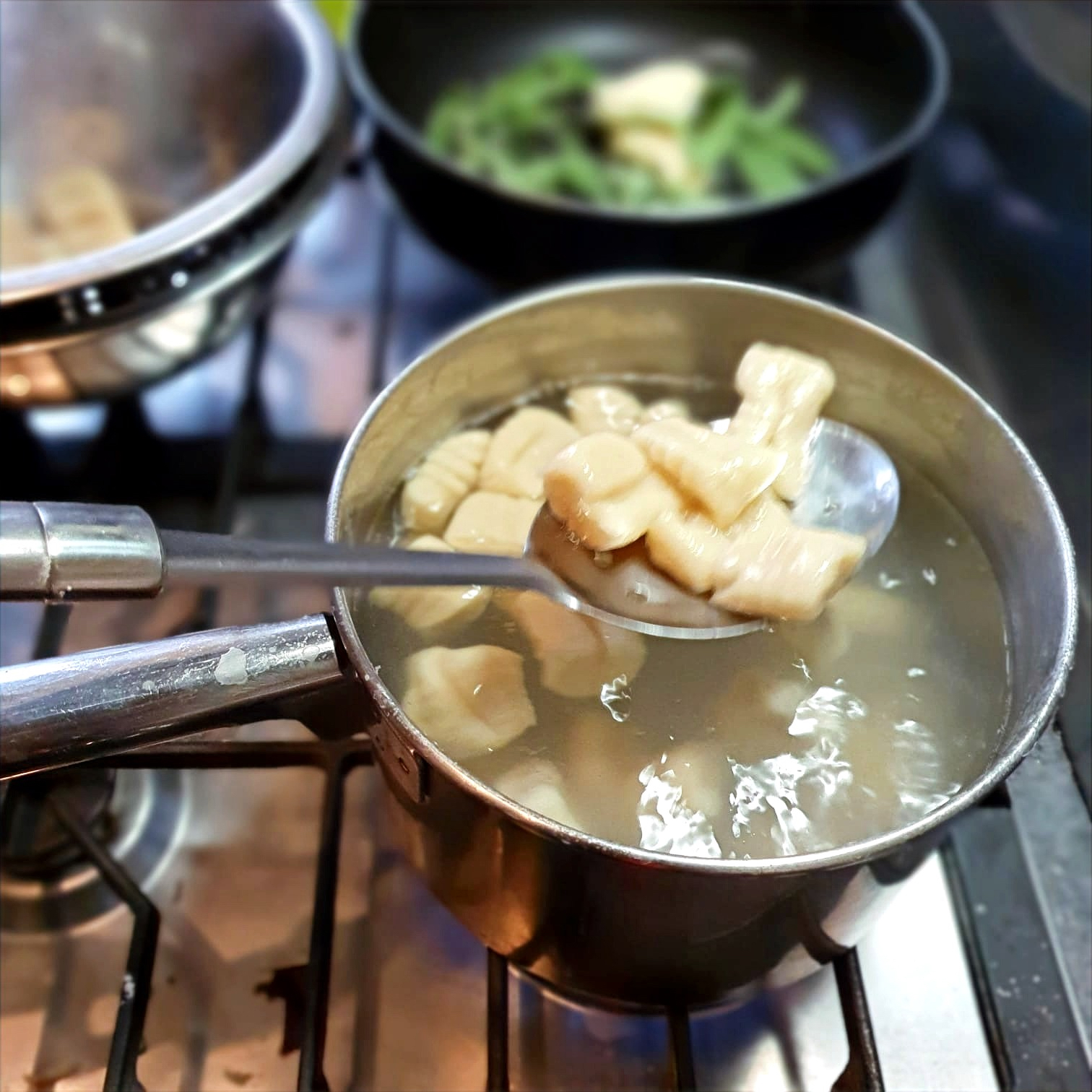
7) On the side prepare the sauce: place the washed sage leaves in a large frying pan with the butter (or spread) and set on a medium heat. As the butter melts, swirl the sage around to ensure no dry leaves are left.
8) Once the sauce is ready, place the cooked gnocchi in the frying pan to coat. Serve with some Parmesan or Pecorino cheese grated on top (optional).
Buon appetito!
SOME EXTRA TIPS
Gnocchi are a great blank canvas to experiment with different sauces. I have recently really enjoyed finishing them in the pan with butter beans, baby spinach and Parmesan cheese.
If making the sage and butter version, don't throw away the crispy sage leaves; whilst they are not a taste for everyone, give them a try and you might be pleasantly surprised!
For more of Giada's delicious recipes, visit her food blog HERE or follow her on Instagram.
-----
